
Court halts tailings increase as First Nation challenges B.C.’s decision to greenlight it
Court sides with Xatśūll First Nation, temporarily halting Mount Polley mine waste expansion
When Alberta premier Jason Kenney was elected in April, many local activists kicked into high gear.
A public inquiry into the funding of environmental groups, a war room, scrapping the carbon tax — all of these policies seemed to many activists to be an onslaught of worrying government policies.
But for Edmonton organizer Veronica Fuentes, it seemed a bit like more of the same.
Fuentes, whose father is Salvadoran and whose mother is from the Yellow Quill First Nation in Saskatchewan and a survivor of the sixties scoop, is an organizer in early her early twenties who is part of an Edmonton group called the Beaver Hills Warriors.
The colonial violence inflicted on her family members by past governments is part of the reason, she tells me, that she doesn’t feel all that different under Jason Kenney.
“That’s the difference when it’s Indigenous-led organizing,” she says. “The faith you have in your government is already skewed.”
When I meet Fuentes, she’s just handed in her last assignment for her second year in the Faculty of Native Studies at the University of Alberta.
In addition to her studies, she works a number of jobs and spends as much time as she can organizing with the Beaver Hills Warriors, an Indigenous youth collective that advocates for Indigenous rights.
https://www.instagram.com/p/BzgNYVxFlWb/
She focuses her energy on Indigenous-led activism — for her, that’s activism that centres ceremony, self-care and community building.
She also believes engaging in electoral politics has its place. “We’re all well aware of it, we follow it, we all just sit in our seats just, like, facepalming,” she says. She believes centring Indigenous ceremony and building relationships among Indigenous people is also powerful — if not more so.
“That’s not to say we don’t understand the significance of engaging in electoral politics, but a lot of us don’t feel safe in those spaces,” she tells me.
“The reality for my community in El Salvador and in Saskatchewan — [my family is] from the Yellow Quill First Nation — is very, very different from the reality that’s centred in white climate justice,” Fuentes, who identifies as
Anishinaabekwe tied to Treaty 4, says.
“A group of Indigenous folk took note of that and wanted to recenter the narrative and take hold of the narrative.”
The Beaver Hills Warriors was born out of this Indigenous-led movement in activism and community organizing.
Nigel Robinson, another member of the Beaver Hills Warriors, was 24 when he first took out a weathered copy of “The Fourth World: An Indian Reality,” by George Manuel from the Edmonton Public Library. “I read the first 70 pages of that and it blew my mind,” he says.
For Robinson, those pages put words to feelings he had not seen in print before. He remembers reading about how “the common perception that Indigenous people are inherently inferior … and that the colonizer uplifted us,” and it struck him that there must be a persistent belief in inferiority in order for a society to dispossess Indigenous people of their land.
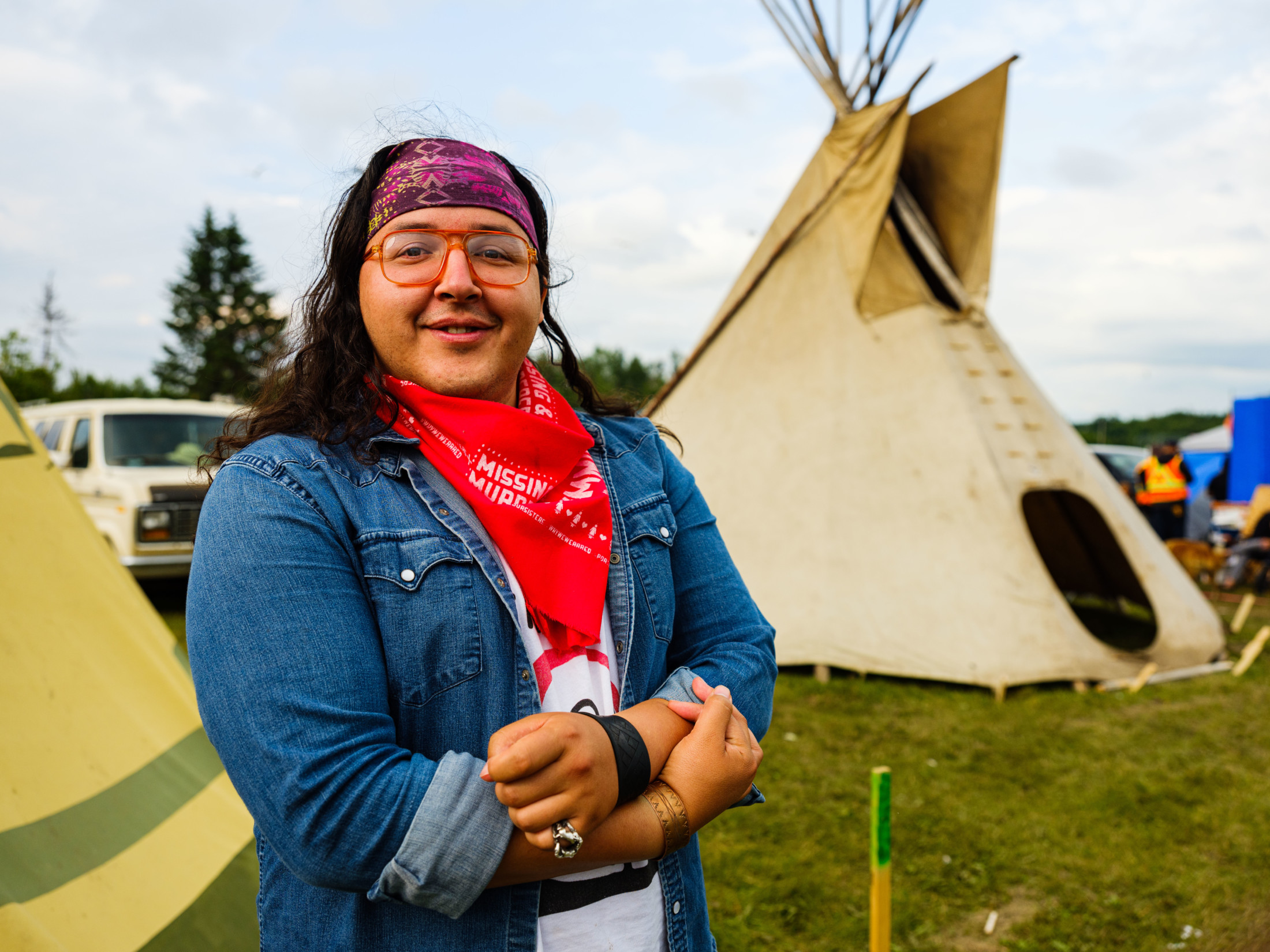
Nigel Robinson is a member of the Łuéchogh Túé First Nation near what is now called Cold Lake, Alta. In his lifetime, he’s already seen changes in the lake, which has been part of his motivation to advocate for climate justice. Photo: Abdul Malik / The Narwhal
Robinson had been thinking a lot about the larger forces at play in society since his father’s death in 2010, at the age of 48, when Robinson was still a teenager. He says he heard terrible sentiments at the time, with people saying, “he’s just an Indian.”
Robinson says that was when he “started to think critically” about some of the issues he saw in his community. He began to realize they were “methods of dispossession.” He says residential schools and “imposed alcoholism,” both at play in his father’s death, were tools of colonialism.
“It’s all interconnected,” he says.
Robinson’s family has a history of advocacy. He says his uncle was of particular inspiration to him, and was a mentor until his death earlier this year.
https://www.instagram.com/p/Bt3vukIFauM/
He’s been asked to present to local high school classes and prefers to steer presentations away from what he calls “tokenizing” performances, toward discussions about modern, nuanced Indigenous life.
When we meet, he’s on contract with the Blue Quills language program, and is passionate about the importance of Indigenous languages. He’s working toward fluency in Dene and Cree. “Indigenous languages are the first languages the land has given us,” he says.
And he’s a mainstay at Beaver Hills Warriors events.
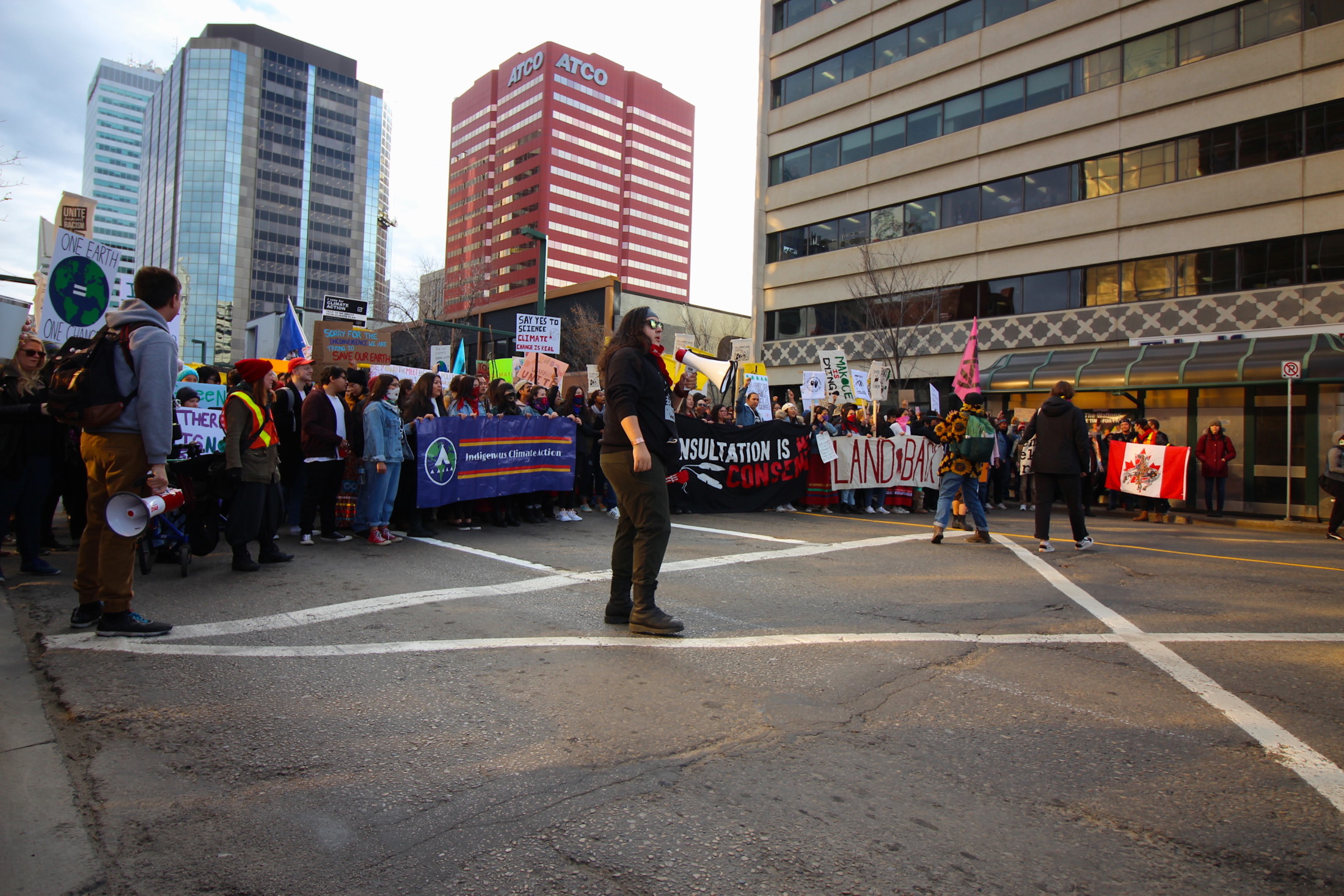
Nigel Robinson on the megaphone at an October climate rally in Edmonton — in which Indigenous activists led the march — joined by Swedish climate activist Greta Thunberg. Photo: Sharon J. Riley / The Narwhal
Robinson is a member of the Łuéchogh Túé First Nation near what is now called Cold Lake, Alta.
He never drank the water from Cold Lake, but his grandparents did. He grew up swimming in the waters, but that’s now discouraged too.
“The lake is easily impacted,” Robinson says, and his own observations of its changes were part of what led him to his work advocating for climate action. (Robinson recently attended the climate summit in Madrid.)
Robinson has been very involved in the group’s recent actions to push for the federal government to reject proposals for Teck Resource’s Frontier Mine project — a massive new oilsands mine proposed in northern Alberta.
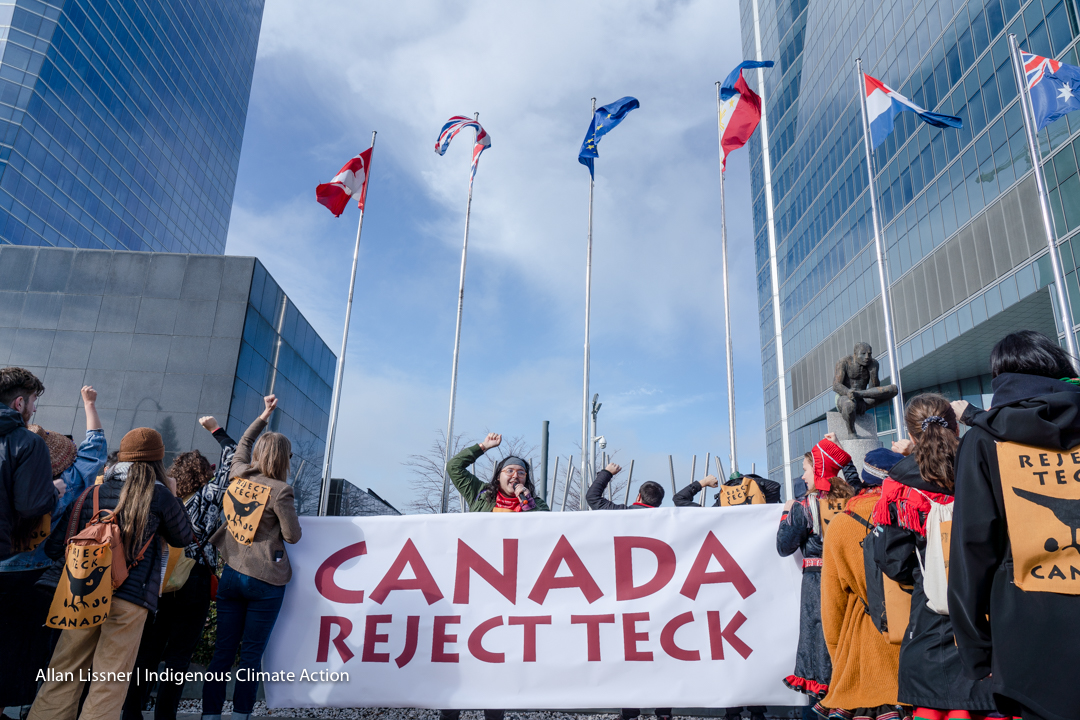
Robinson (centre) at a Reject Teck rally at the climate summit in Madrid. Photo: Allan Lissner / Indigenous Climate Action.
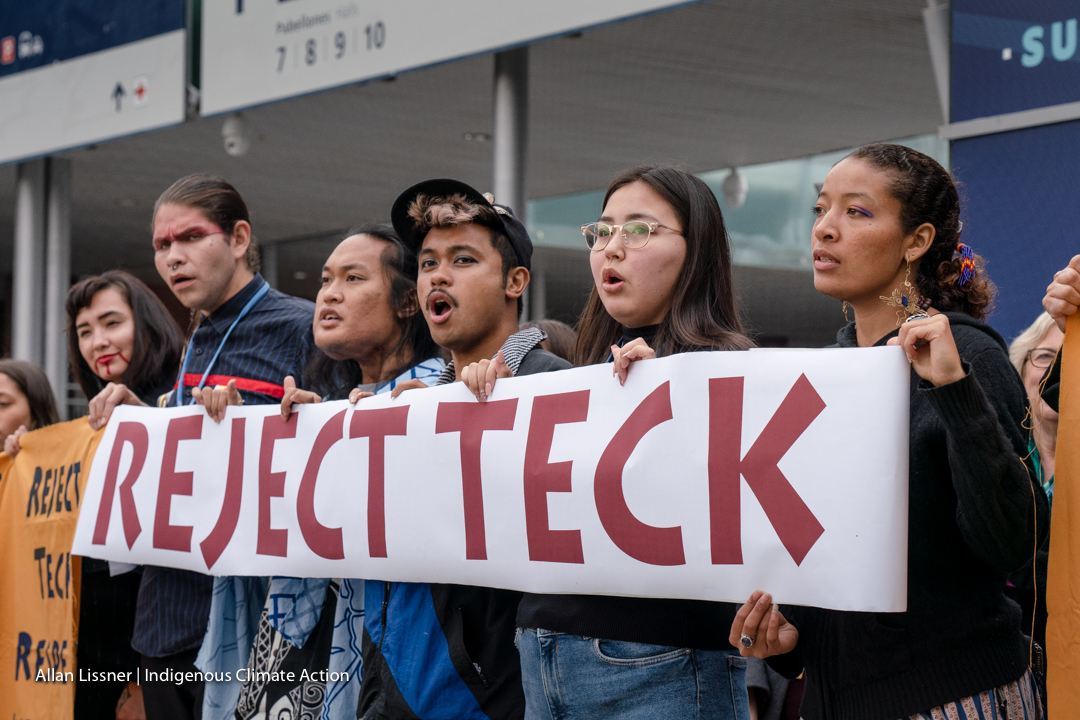
Indigenous activists have called on the federal government to reject Teck Resources’ Frontier oilsands mine project in Northern Alberta. Photo: Allan Lissner / Indigenous Climate Action.
There’s a “life sustaining nature to our worldviews,” Fuentes says. “And I think that’s something we can teach the Western world something about.”
This is something Fuentes is conscious of — and conscious of who is centring the narrative.
“Energy solutions without free, prior, informed consent of Indigenous communities — this replicates colonialism, which I think is something that we that we have to be constantly pushing [back against],” she says.
That’s part of why the “Reject Teck” campaign has been conscious of amplifying Indigenous voices.
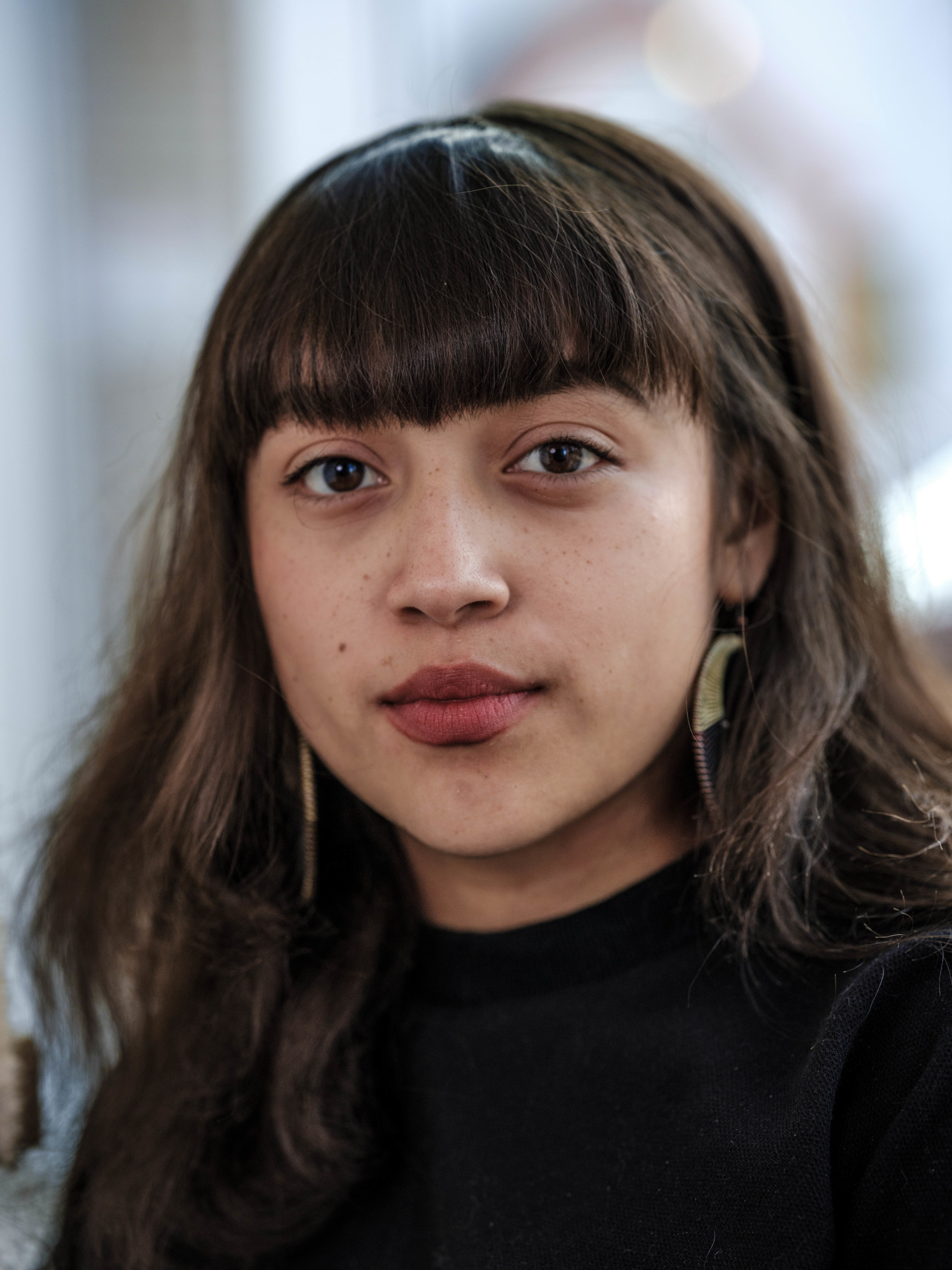
There’s a “life sustaining nature to our worldviews,” Fuentes says. “And I think that’s something we can teach the Western world something about.” Photo: Abdul Malik / The Narwhal
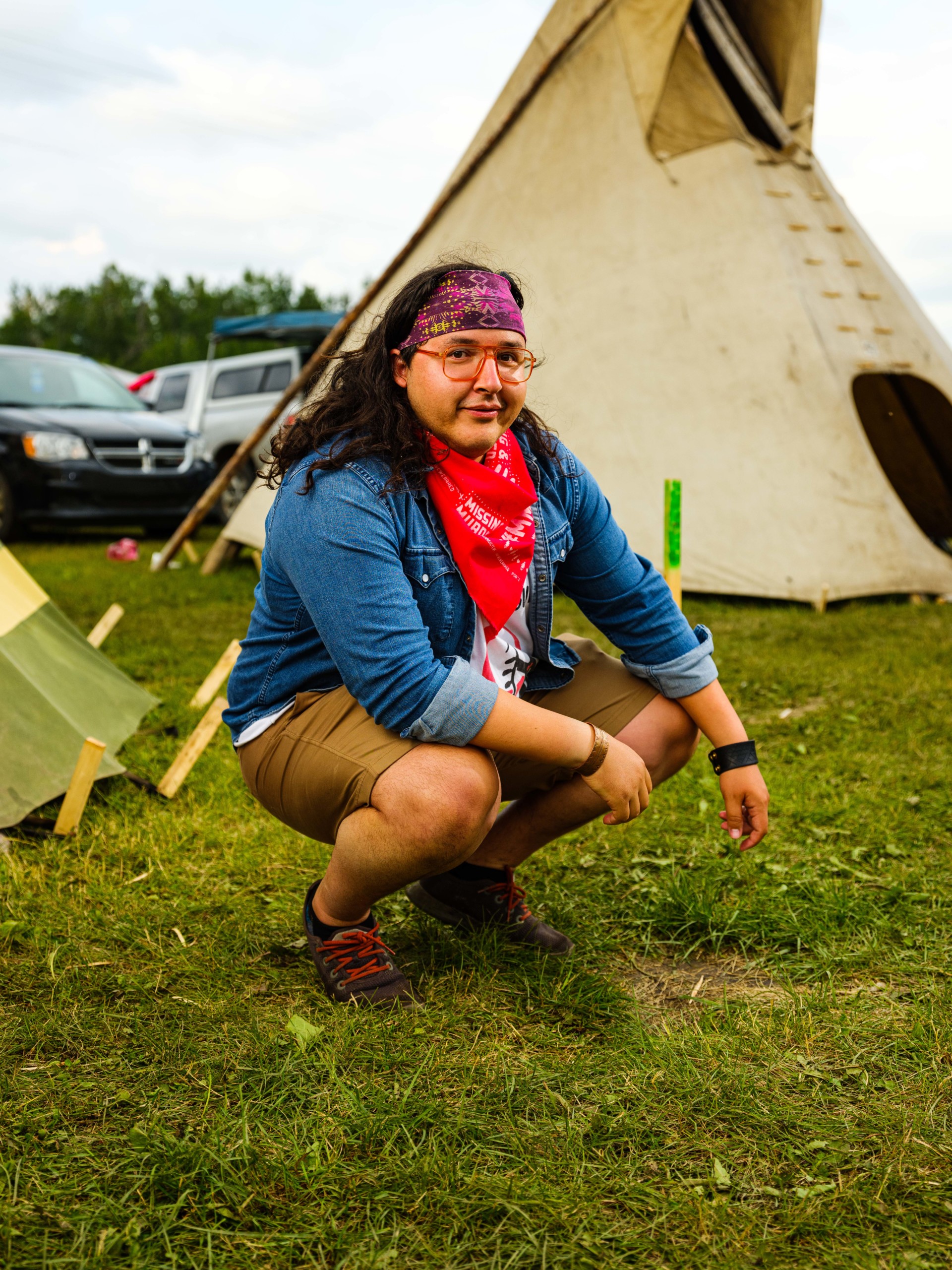
Robinson first read George Manuel when he was 24. He remembers how it struck him that there must be a persistent belief in inferiority in order for a society to dispossess Indigenous people of their land. Photo: Abdul Malik / The Narwhal
Fuentes is concerned with the way Indigenous activism is often portrayed in the media. “It unfairly paints us as militant natives,” she says. “And that’s exactly what makes us unsafe.”
One of the first actions Fuentes remembers with the Beaver Hills Warriors was anything but militant.
“We occupied 104th and Jasper [in downtown Edmonton] for about 45 minutes with a round dance,” she remembers. The action was in “solidarity with the Gidimt’en check point raid and the Wet’suwet’en at Unist’ot’en Camp.”
“We’d like to move forward a lot more with centring ceremony as actions,” Fuentes says. “I think a lot of people misunderstood what a round dance meant.”
For Fuentes, actions like this help to bolster the community. “I think the intention is to build power within communities,” she says. “It’s not to, like, convince white people.”
The group works alongside other organizers in Edmonton, like Climate Justice Edmonton, Indigenous Climate Action, Edmonton Youth For Climate and Extinction Rebellion Edmonton.
Recently, they partnered with other groups for an anti-consumerism event on Black Friday in one of Edmonton’s shopping malls. Around 75 people showed up to participate in a round dance in the middle of one of the busiest shopping days of the year.
The group also invited Kanahus Manuel, a Secwepemc and Ktunaxa Indigenous Land Defender and tattoo artist for a tattoo gathering earlier this year.
https://www.instagram.com/p/BxI-JDvBebb/
“She did traditional face tattoos right at the entrance of the Trans Mountain terminal,” Fuentes says. Fuentes also got a tattoo that day, a simple thread around her wrist, which she describes as earth lines — a constant visible reminder of her community and her motivations.
“We’re always saying we need to decolonize our organizing,” Fuentes says. “Maybe that means less Google Docs and more sitting around my house” sharing food.
“It feels healthier than when I’m sitting in meetings,” she says of ceremony and self-care focused organizing, noting that it means the community can “organize in a sustainable way.”
“You’re constantly doing self care as a team,” she says “And we’re constantly checking in with each other.”
Get the inside scoop on The Narwhal’s environment and climate reporting by signing up for our free newsletter. On a warm September evening nearly 15...
Continue reading
Court sides with Xatśūll First Nation, temporarily halting Mount Polley mine waste expansion

Break out the champagne: Emma’s storied life and leadership in journalism has earned her the...

How can we limit damage from disasters like the 2024 Toronto floods? In this explainer...
